IGCSE REVISION
Lesson 1:
Starter:
1. In the first movement of Beethoven’s Symphony No. 5, how does the composer create a sense of tension and drama? Identify specific musical elements such as rhythm, dynamics, and instrumentation that contribute to this effect.
2. Compare and contrast the themes and mood of the first and second movements of Beethoven’s Symphony No. 5. How does Beethoven use tempo, melody, and harmony to differentiate between these movements while maintaining a cohesive musical narrative?
Lesson objectives:
1. To practice answering Section D set work exam paper questions
2. To practice Ensemble piece
Beethoven Symphony N5 mvt. 2
Activity 1:
Listen to the recording and follow the annotated score.
Activity 2:
Complete the question papers, check your answers and note what have you missed or not answered.
Activity 3:
Practice your ensemble pieces. Check the marking criteria and analyze which areas still need to be improved.
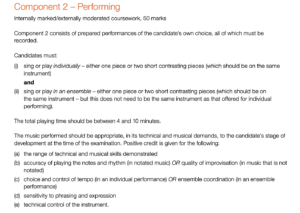
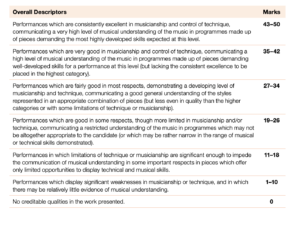
Extension listening task/Homework
Several symphonic pieces share similarities with Beethoven’s Symphony No. 5, either in terms of structure, mood, or thematic development. Here are a few examples:
1. Tchaikovsky’s Symphony No. 4: Like Beethoven’s Fifth, Tchaikovsky’s Fourth Symphony begins with a memorable and dramatic motif that recurs throughout the work, symbolizing fate. Both symphonies also explore themes of struggle, triumph, and ultimately, redemption.
2. Shostakovich’s Symphony No. 5: Shostakovich’s Fifth Symphony, composed in the midst of Soviet political pressure, shares Beethoven’s Fifth’s sense of defiance and triumph over adversity. It features a recurring, insistent motif similar to Beethoven’s “fate” motif, and both works are often seen as responses to societal challenges.
3. Brahms’ Symphony No. 1: Brahms’ First Symphony, like Beethoven’s Fifth, carries a weight of expectation as the composer’s first foray into the symphonic genre. It features a strong, assertive opening theme in the first movement and undergoes a journey of struggle and resolution similar to Beethoven’s work.
4. Mahler’s Symphony No. 1: Mahler’s First Symphony, often dubbed the “Titan,” shares Beethoven’s ambitious and monumental approach to symphonic writing. Both symphonies feature dramatic contrasts, emotional intensity, and thematic development across their movements.
5. Sibelius’ Symphony No. 5: Sibelius’ Fifth Symphony, particularly its final movement, shares a sense of triumph and grandeur reminiscent of Beethoven’s Fifth. Both works showcase the power of orchestral writing and the use of recurring motifs to create unity and drama.
Answers to the starter activity:
Highlight key musical terms:
- In the first movement of Beethoven’s Symphony No. 5, tension and drama are heightened through various musical devices. For instance, the iconic four-note motif, heard at the beginning, establishes a sense of urgency and sets the tone for the entire movement. Beethoven employs dynamic contrasts extensively, with sudden shifts between loud and soft passages, adding to the dramatic effect. Additionally, rhythmic drive, particularly in the famous “fate” theme, propels the music forward, creating a feeling of relentless momentum. The orchestration, with its use of full orchestra punctuated by solo passages, contributes to the overall intensity. These elements combine to create a gripping and emotionally charged atmosphere throughout the movement.
- The first and second movements of Beethoven’s Symphony No. 5 exhibit distinct themes and moods while remaining interconnected. The first movement is characterized by its bold and assertive nature, driven by the recurring “fate” motif and marked by a sense of struggle and determination. In contrast, the second movement, a lyrical and introspective Andante, offers a moment of respite and reflection. The tempo is slower, allowing for more expressive melodies and nuanced harmonies. While the first movement is predominantly in minor keys, evoking a sense of conflict, the second movement shifts to a brighter major key, conveying a more peaceful sentiment. Despite these differences, Beethoven maintains coherence between the movements through thematic connections and the underlying sense of tension and resolution that permeates the entire symphony.
6th of May
Lesson Objectives:

- To learn to answer the exam style questions .
- To complete listening exercises related to Baroque, Classical and Romantic styles.
Common answers for Classical: 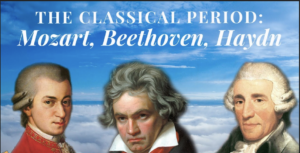
Small orchestra [1]
Balanced phrases [1]
Diatonic / functional harmony [1]
Melodies using scalic patterns [1]
Homophonic / melody and accompaniment texture [1]
Baroque: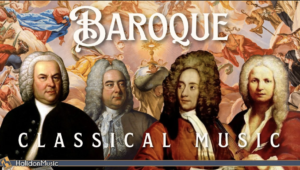
Harpsichord / (basso) continuo [1]
Use of ornamentation / decoration [1]
Small orchestra / strings only [1]
Diatonic harmony [1]
(Mostly) continuously moving bass line [1]
Romantic music
Large orchestra;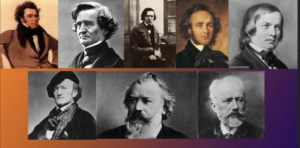
Wind/brass plaing the melody;
Use of chromaticism
Vocal effects: Melismatic and Syllabic
Articulations: Staccato, legato, accented notes
Questions:
- The extract continues with a repeat of the melody. Explain how the roles of the instruments
change:______________________________________________________________
2. During this repeat, the melody changes from the end of bar 8. Explain how it changes.
___________________________________________________________________
3. Briefly describe the music of the introduction ___________________________________________________________________
4. Describe the music of the accompaniment to the printed melody
___________________________________________________________________
5. What instrument first takes over the melody after the printed extract?
___________________________________________________________________
Answers:
- Instrument
- Repetitions
- in unison
- in octave
- swap roles
- higher/lower
- sequence
- Major/Minor scale
- articulations: legato/staccato
- Bass line.
- Melody/counter melody/accompaniment.
- Vocal effects: Melismatic, Syllabic
Features of Chinese music
